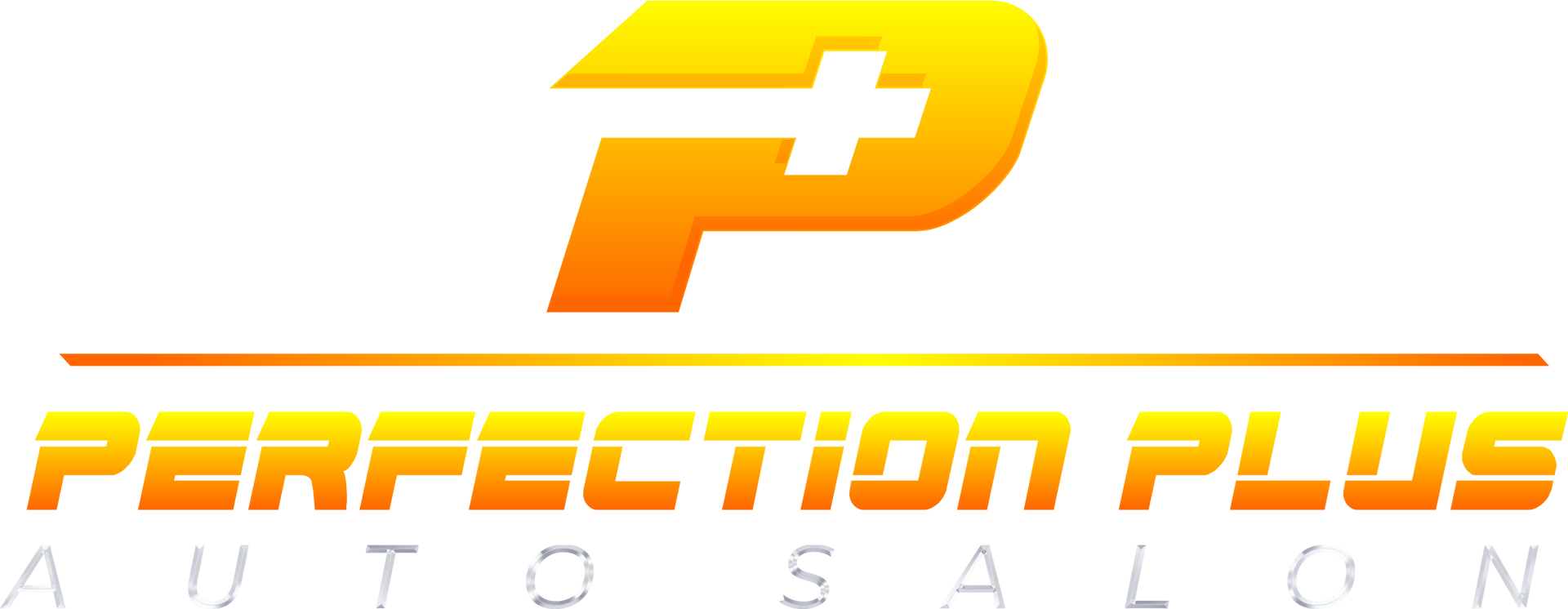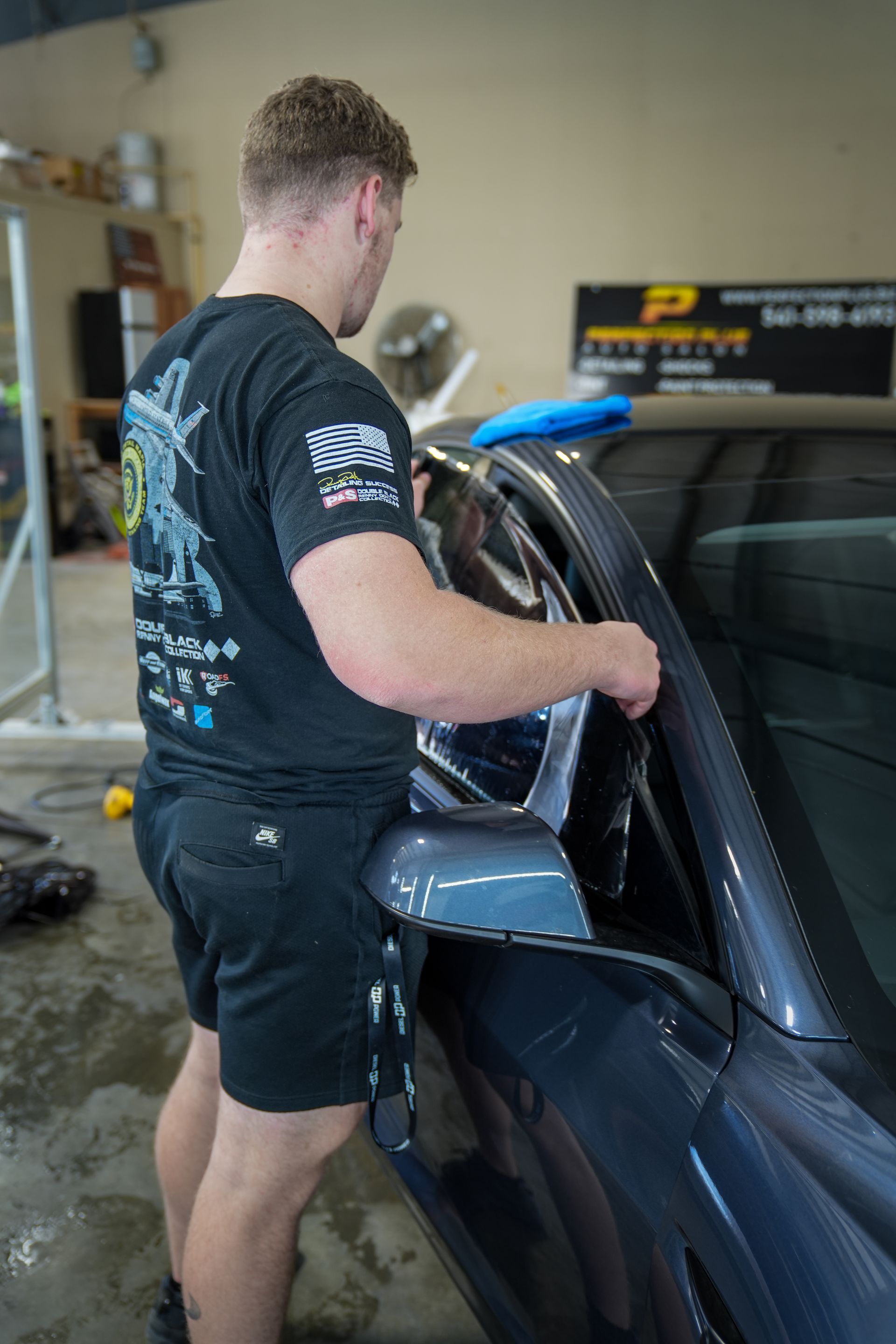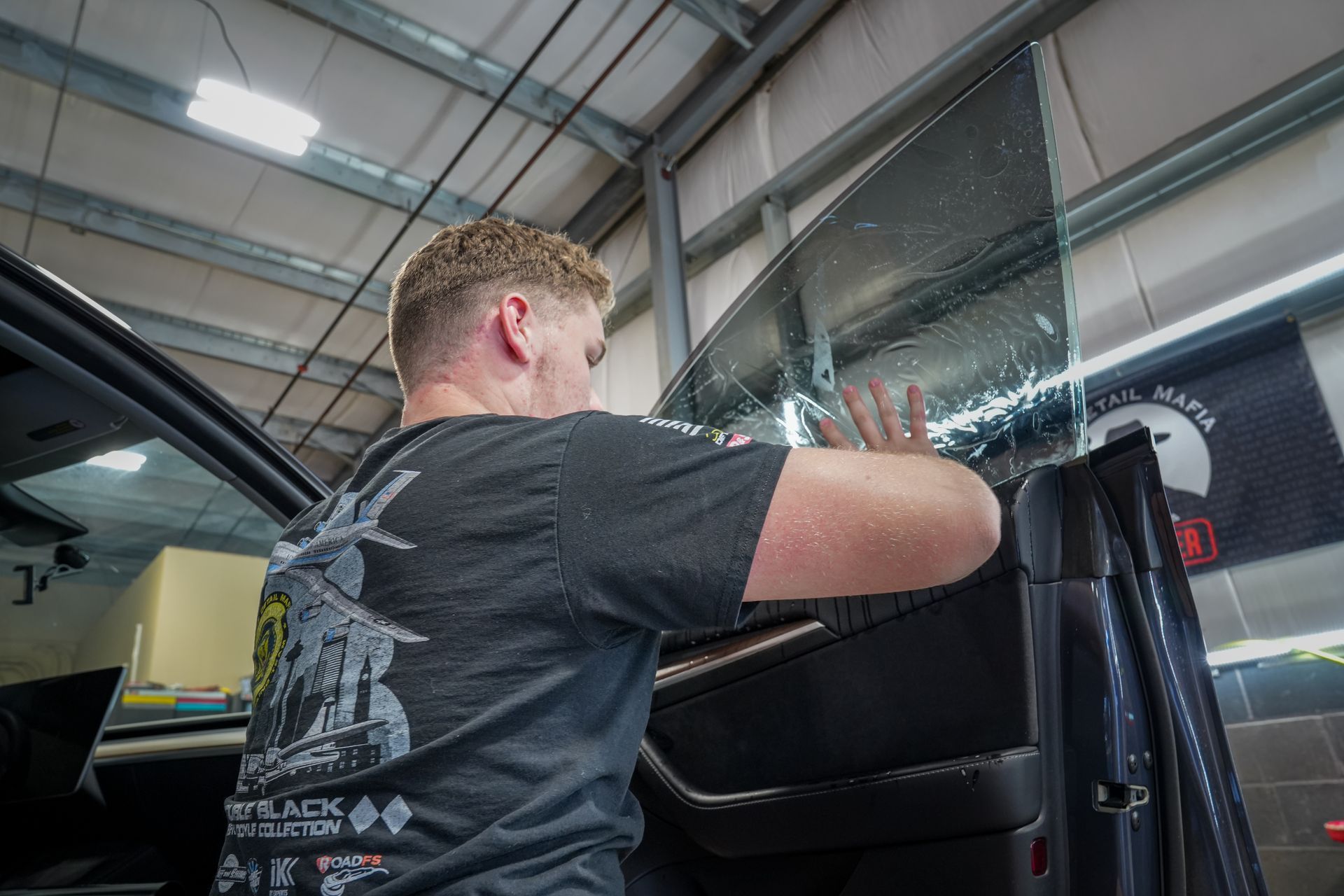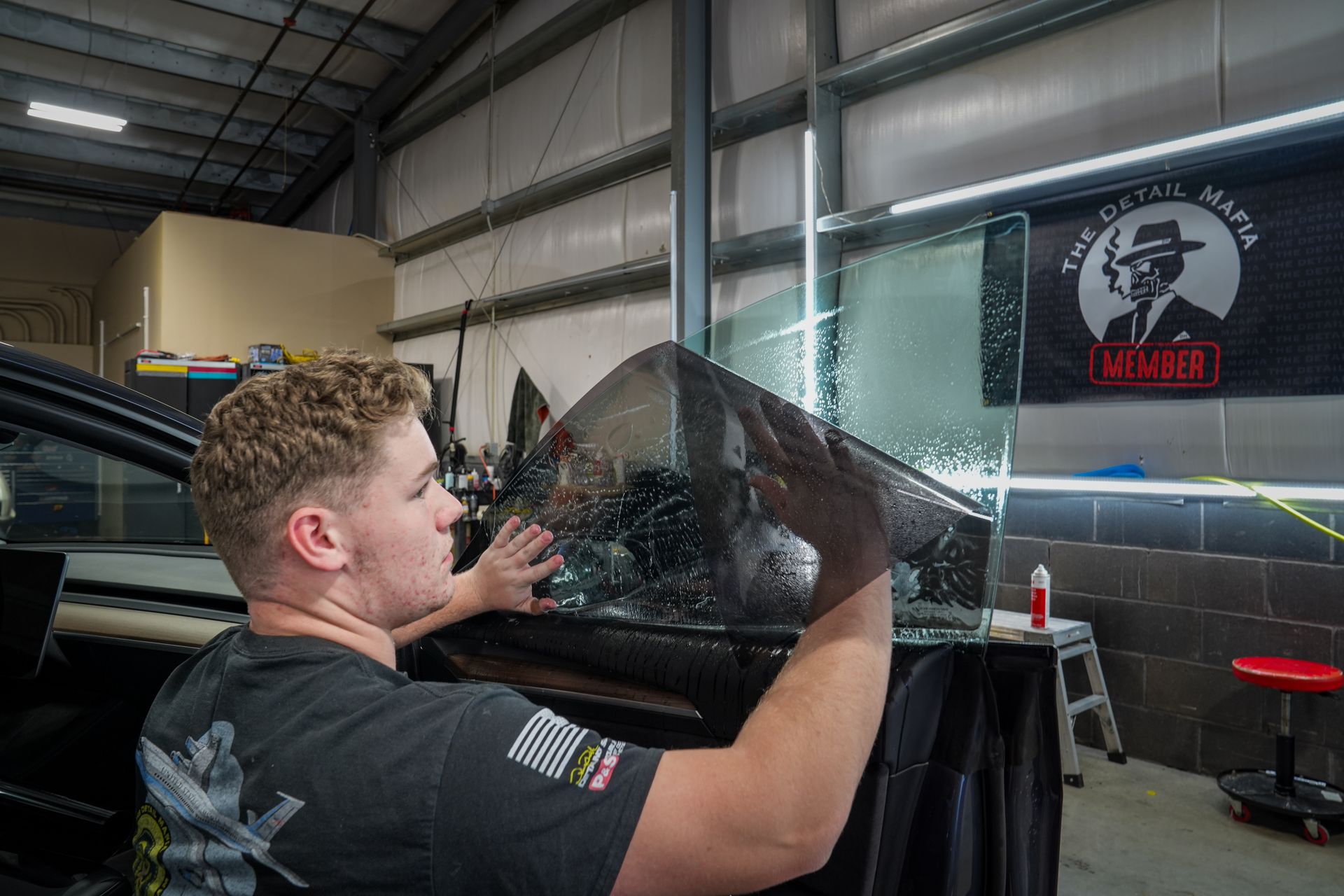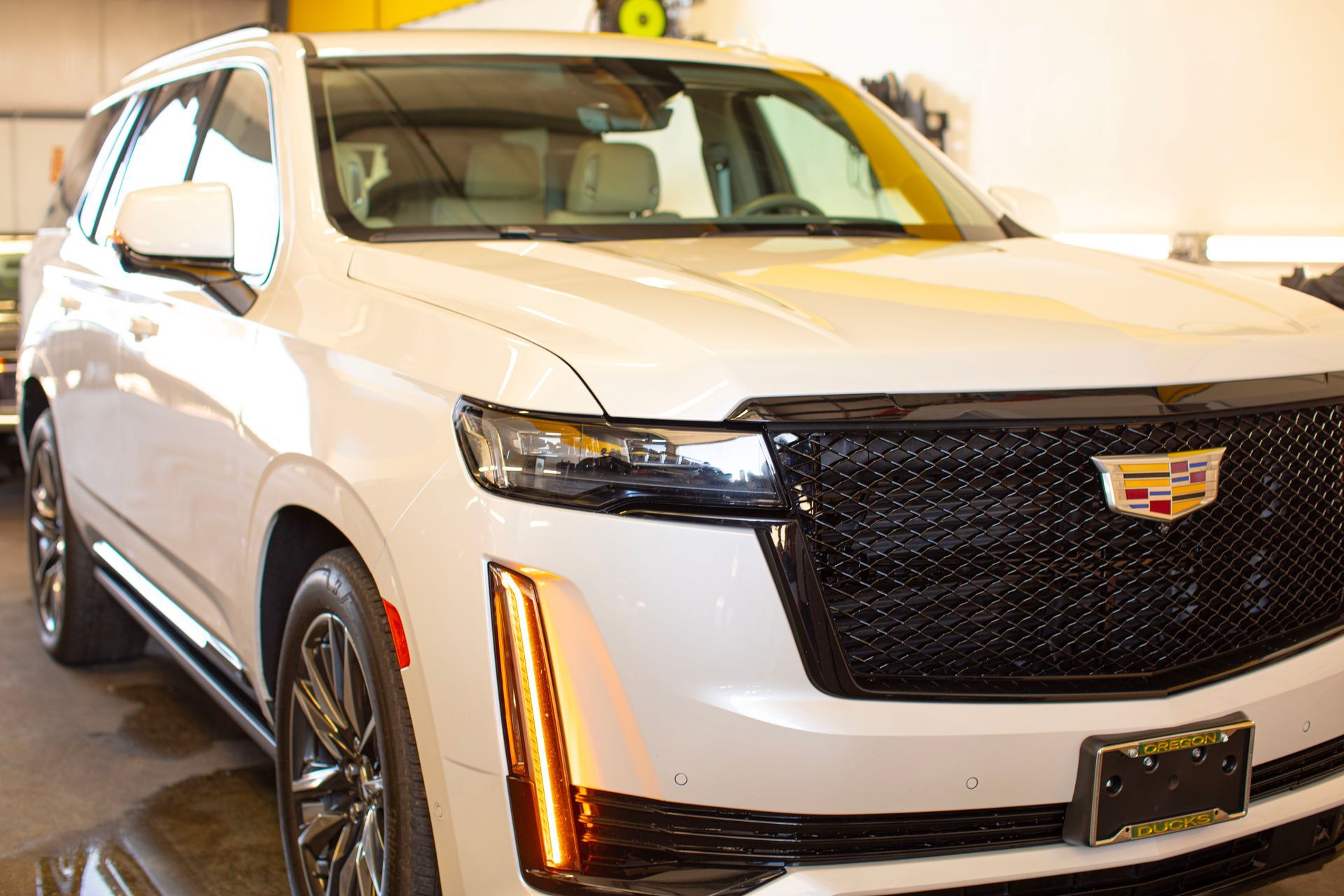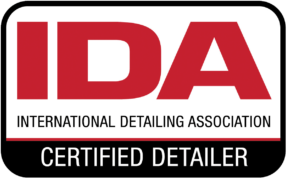Window Tinting: Reducing Vehicle Cabin Temperatures for Ultimate Comfort
GET A FREE ESTIMATEStepping into a car that's been sitting in the sun can feel like walking into an oven. The oppressive heat that builds up inside a vehicle isn't just uncomfortable—it can make your daily commute unbearable and put unnecessary strain on your air conditioning system. Window tinting offers an effective solution by blocking harmful rays and significantly reducing cabin temperatures, transforming your vehicle into a more comfortable space regardless of how hot it gets outside.
How Window Tinting Reduces Heat
Window tinting works by blocking specific types of solar radiation that cause heat buildup inside vehicles. When sunlight hits your car's windows, it contains ultraviolet (UV) rays and infrared rays. UV rays contribute to interior degradation over time, while infrared rays are primarily responsible for the intense heat that accumulates in your cabin. Quality window films are designed to reflect or absorb a significant portion of both types of radiation. High-performance tints can reject up to 99% of harmful UV rays and a substantial amount of infrared energy. Standard automotive glass typically blocks only about 30% of UV rays, allowing most infrared energy to pass through unchecked. This is why an untinted car cabin can heat up dramatically—reaching temperatures of 110°F or higher within just 10 minutes under direct sunlight. Advanced tinting films can reduce cabin temperatures by up to 40°F compared to untinted vehicles after sun exposure. This dramatic difference not only improves comfort but also reduces the burden on your vehicle's air conditioning system, which can improve fuel efficiency by up to 7%. Lower cabin temperatures also mean less strain on mechanical components that would otherwise work harder in extreme heat.
Types of Window Tints Available
Understanding the different types of window tints can help you choose the right option for your needs. Each type offers varying levels of performance, durability, and cost.
- Dyed Films: They represent the most budget-friendly option. These consist of layers of dyed plastic that absorb sunlight, providing basic privacy and light reduction. However, they offer limited heat rejection and UV protection compared to more advanced options. Over time, dyed films tend to fade when exposed to UV rays and may develop bubbling issues.
- Metallic Films: They use metal-based materials in their construction, allowing them to reflect heat away from your vehicle more effectively than dyed films. They provide better heat reduction and often feature an attractive mirrored finish. The trade-off is that metallic films can interfere with radio signals and electronic devices, which may be a concern for vehicles with advanced technology systems.
- Carbon Films: They offer a middle ground between affordability and performance. Composed of carbon particles, these films block up to 40% of infrared light while maintaining good visibility and reducing heat buildup without fading over time. Carbon films don't interfere with electronic devices, making them suitable for modern vehicles with GPS, Bluetooth, and other wireless systems.
- Ceramic Films: They represent the premium option in window tinting technology. These films utilize non-metallic ceramic particles to deliver exceptional performance, blocking up to 99% of harmful UV rays while reducing cabin temperatures by more than 50%. Though they require a higher initial investment, the long-term benefits include enhanced comfort, reduced air conditioning use, and potential fuel savings.
Benefits Beyond Temperature Control
The advantages of window tinting extend well beyond keeping your car cool. A properly tinted vehicle offers multiple benefits that enhance both comfort and practicality. One immediate benefit is the improved comfort when entering your parked vehicle. Tinted windows allow your car to cool down much more quickly after being exposed to direct sunlight, eliminating that initial blast of hot air when you open the door. This comfort factor becomes particularly valuable during summer months when outdoor temperatures soar. The reduction in cabin temperature also translates to less reliance on air conditioning, which directly impacts fuel efficiency. When your AC system doesn't have to work as hard to cool an overheated cabin, you'll notice savings at the pump over time. These savings accumulate throughout the years of vehicle ownership. Window tinting also provides crucial protection for your vehicle's interior. Lower temperatures and reduced UV exposure prevent cracking, fading, and deterioration of seats, dashboards, and other interior panels. This preservation helps maintain your vehicle's aesthetic appeal and resale value over the long term.
Health and Safety Considerations
Beyond comfort and convenience, quality window tinting offers important health benefits by blocking harmful UV radiation. Premium tints can block up to 99% of UVB rays, which are the primary cause of skin burns and have been linked to various skin cancers. This protection becomes especially valuable during long commutes or road trips when UV exposure accumulates over extended periods. The UV-blocking properties of window films also shield passengers from the cumulative effects of sun exposure, which can be significant even when you don't feel particularly warm inside your vehicle. This invisible protection works continuously, whether you're aware of it or not.
Choosing the Right Tint
Selecting the appropriate window tint depends on several factors, including your climate, driving habits, and personal preferences. If you live in a particularly warm region, heat reduction should be a primary consideration. For those who drive frequently at night, visibility and the potential for signal interference may be more important factors. When comparing different tint options, pay attention to Total Solar Energy Rejected (TSER) values. A higher TSER indicates that the film is more effective at blocking sunlight and reducing cabin temperatures. For example, ceramic films can reject up to 70% of heat, while traditional dyed films might only block 30-50%. It's also essential to understand local regulations before selecting a tint. Every state has specific laws regarding window tinting, particularly concerning the percentage of visible light transmission (VLT) allowed. Some states require that 70% of light must pass through front side windows, while others permit darker shades. Windshield tinting is typically restricted to a strip at the top of the glass. Working with professional installers familiar with regional regulations can help ensure compliance and avoid potential fines.
Maintaining Your Tinted Windows
Proper maintenance can significantly extend the lifespan and effectiveness of your window tint. The key is using the right cleaning methods and products while avoiding those that can damage the film. Avoid ammonia-based cleaners, as these can cause discoloration and peeling over time. Instead, use a solution of mild soap mixed with water. Simply add a couple of drops of dish soap to a spray bottle filled with water for an effective, gentle cleaning solution. When cleaning, use soft microfiber cloths and wipe in circular motions to avoid streaking. After installation, wait at least a week before rolling down tinted windows to allow the adhesive to cure fully. Regularly inspect your tinted windows for air bubbles or peeling edges and address any issues promptly to prevent further damage. Environmental factors such as extreme temperatures can affect the longevity of window film. Whenever possible, park in shaded areas or inside a garage to protect both your vehicle's exterior and interior from excessive heat and UV exposure.
Making the Investment
Window tinting represents a worthwhile investment in your vehicle's comfort, efficiency, and longevity. The immediate benefits of reduced cabin temperatures and increased comfort are complemented by long-term advantages, including fuel savings, interior preservation, and health protection. When considering window tinting, focus on quality over cost. While premium films require a higher initial investment, their superior performance and durability often provide better value over time. High-quality tinting performs better and lasts longer, reducing the need for replacement and maintaining its protective properties throughout its lifespan. By choosing the appropriate tint type for your needs, ensuring compliance with local regulations, and maintaining your tinted windows properly, you can enjoy years of enhanced comfort and protection in your vehicle.
Leading Window Tint Installers in Bend, OR
Beat the Bend, OR heat while adding a sleek touch to your ride with
expert window tinting from Perfection Plus Auto Salon. Our premium films reduce glare, block harmful UV rays, and enhance comfort for every drive. Whether you’re seeking privacy or interior protection, our professional installers ensure flawless results every time.
Schedule your window tinting appointment today and experience the perfect balance of style, protection, and performance with Perfection Plus Auto Salon!
